#strategies and tips
Explore tagged Tumblr posts
Text
How to Determine the Age of an Antique Clock: Strategies and Tips
Determining the age of a clock can be challenging, especially since listings often don’t specify the exact year the clock was made. However, you might come across phrases like “mid-century”, antique, collectible, or vintage which can give you a general sense of its age. If the description is accurate, it provides a good starting point for determining the age of the clock. As a rule of thumb, an…
#antique#antique clock#clock#clocks#collectable#collector#horology#patent nmber#serial number#strategies and tips#time and strike#vintage clock
0 notes
Text
How many drafts should you go through before deciding your novel is ready?
There's no specific (official) number, but to create a foundation that ensures you don't burn out quickly, overwork yourself, and get tired of your work, I'll say four. It's the same number I use for my students since most of them have other engagements outside writing that take up a copious amount of their time.
1. Initial or Zero Draft:
This draft is also called the 'just write' draft. Focus on putting that idea down. As the creative juices flow, let it all out. Don't worry about perfection or coherence; the goal is to capture your raw ideas and get the story out of your head and onto the page.
2. Second Draft:
This is the plot draft. Read through what you have written to see if every detail you added was meant to be. Here, you focus on the structure of your story. Ensure that the plot makes sense, the pacing is right, and there are no major plot holes. This is where you might add, remove, or rearrange scenes to improve the overall flow of the narrative.
3. Third Draft:
Character development draft. In this stage, you look deeper into your characters. Make sure their motivations, backgrounds, and arcs are well-defined and consistent. Flesh out their personalities and relationships, ensuring they are compelling and believable. This is also a good time to refine dialogue and make sure it sounds natural and true to each character. That's for this drafting stage.
4. Fourth Draft:
Grammar and punctuation draft. This is the polishing stage. Focus on correcting grammatical errors, punctuation, and spelling mistakes. Pay attention to sentence structure, word choice, and overall readability. This draft is about making your manuscript as clean and professional as possible.
Keep in mind that the goal is to define what completion means for each draft. Once you reach the goal, take a break and return to it for the next drafting stage.
Some writers pay people to carry out some of the drafting stages for them, so if you fall into that category, you might have fewer drafting stages to handle yourself!
Reblog to save for later 😉
Thank you all for the support 💜!
#writing#writeblr#writers on tumblr#writer#writers and poets#writerscommunity#writing community#wattpad#ao3 writer#a03 writer#on writing#writing stuff#creative writing#writing tips#writers#my writing#writing things#writing strategies#writing struggles#writing stories#writing style#story writing#writing advice#writing asks#writing and poetry#writing a book#writing about writing#writing blog#writing challenge#writing discord
2K notes
·
View notes
Note
hi there! im a fan of your page 💕
can you give me the best studying techniques?
hi angel!! @mythicalmarion tysm for asking about study techniques 🤍 i'm so excited to share my secret methods that helped me maintain perfect grades while still having a dreamy lifestyle + time for self-care!! and thank you for being a fan of my blog, it means everything to me. <3
~ ♡ my non-basic study secrets that actually work ♡ ~
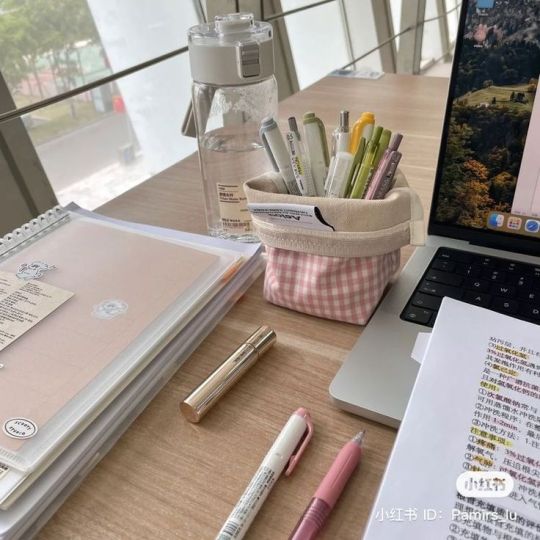

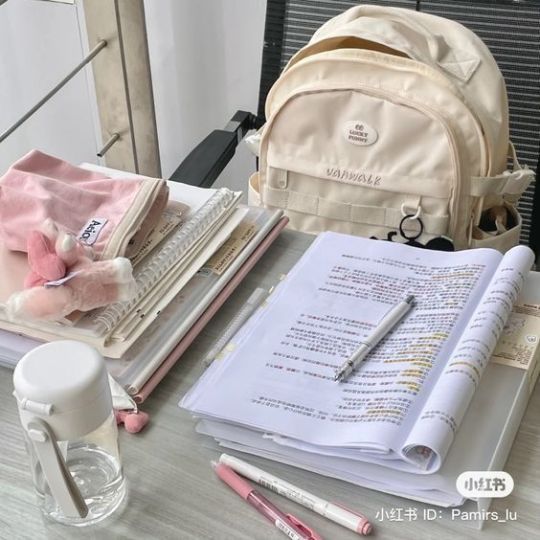

(don't mind the number formatting)
the neural bridging technique this is literally my favorite discovery!! instead of traditional note-taking, i create what i call "neural bridges" between different subjects. for example, when studying both literature + history, i connect historical events with the literature written during that time. i use a special notebook divided into sections where each page has two columns - one for each subject. the connections help you understand both subjects deeper + create stronger memory patterns!!
here's how i do it:
example:
left column: historical event
right column: literary connection
middle: draw connecting lines + add small insights
bottom: write how they influenced each other
the shadow expert method this changed everything for me!! i pretend i'm going to be interviewed as an expert on the topic i'm studying. i create potential interview questions + prepare detailed answers. but here's the twist - i record myself answering these questions in three different ways:
basic explanation (like i'm talking to a friend)
detailed analysis (like i'm teaching a class)
complex discussion (like i'm at a conference)
this forces you to understand the topic from multiple angles + helps you explain concepts in different ways!!
the reverse engineering study system instead of starting with the basics, i begin with the most complex example i can find and work backwards to understand the fundamentals. for example, in calculus, i start with a complicated equation + break it down into smaller parts until i reach the basic concepts.
my process looks like:
find the hardest example in the textbook
list every concept needed to understand it
create a concept map working backwards
study each component separately
rebuild the complex example step by step
the sensory anchoring technique this is seriously game-changing!! i associate different types of information with specific sensory experiences:
theoretical concepts - study while standing
factual information - sitting at my desk
problem-solving - walking slowly
memorization - gentle swaying
review - lying down
your body literally creates muscle memory associated with different types of learning!!
the metacognition mapping strategy i created this method where i track my understanding using what i call "clarity scores":
level 1: can recognize it
level 2: can explain it simply
level 3: can teach it
level 4: can apply it to new situations
level 5: can connect it to other topics
i keep a spreadsheet tracking my clarity levels for each topic + focus my study time on moving everything to level 5!!
the information architecture method instead of linear notes, i create what i call "knowledge buildings":
foundation: basic principles
first floor: key concepts
second floor: applications
top floor: advanced ideas
roof: real-world connections
each "floor" must be solid before moving up + i review from top to bottom weekly!!
the cognitive stamina training this is my absolute secret weapon!! i use a special interval system based on brain wave patterns:
32 minutes of focused study
8 minutes of active recall
16 minutes of teaching the material to my plushies
4 minutes of complete rest
the specific timing helps maintain peak mental performance + prevents study fatigue!!
the synthesis spiral evolution this method literally transformed how i retain information:
create main concept spirals
add branch spirals for subtopics
connect related concepts with colored lines
review by tracing the spiral paths
add new connections each study session
your notes evolve into a beautiful web of knowledge that grows with your understanding!!
these methods might seem different from typical study advice, but they're based on how our brains actually process + store information!! i developed these through lots of research + personal experimentation, and they've helped me maintain perfect grades while still having time for self-care, hobbies + fun!!
sending you the biggest hug + all my good study vibes!! remember that effective studying is about working with your brain, not against it <3
p.s. if you try any of these methods, please let me know how they work for you!! i love hearing about your study journeys!!
xoxo, mindy 🤍
glowettee hotline is still open, drop your dilemmas before the next advice post 💌: https://bit.ly/glowetteehotline

#study techniques#academic success#unconventional study methods#creative study tips#neural bridging#shadow expert method#reverse engineering study#sensory anchoring#effective studying#minimal study guide#glowettee#mindy#alternative learning#academic hacks#study inspiration#cognitive stamina#learning tips#study motivation#unique study strategies#self improvement#it girl energy#study tips#pink#becoming that girl#that girl#girlblogger#girl blogger#dream girl#studying#studyspo
176 notes
·
View notes
Text
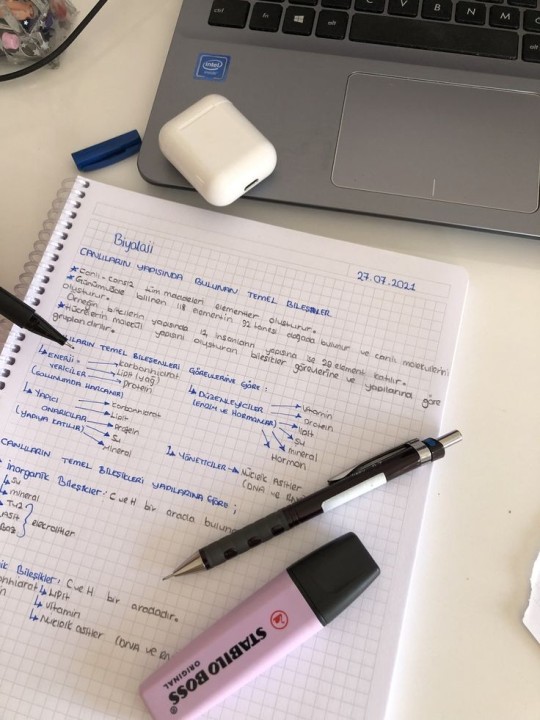
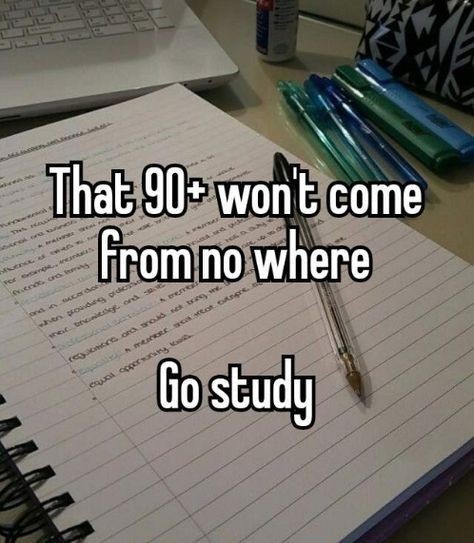
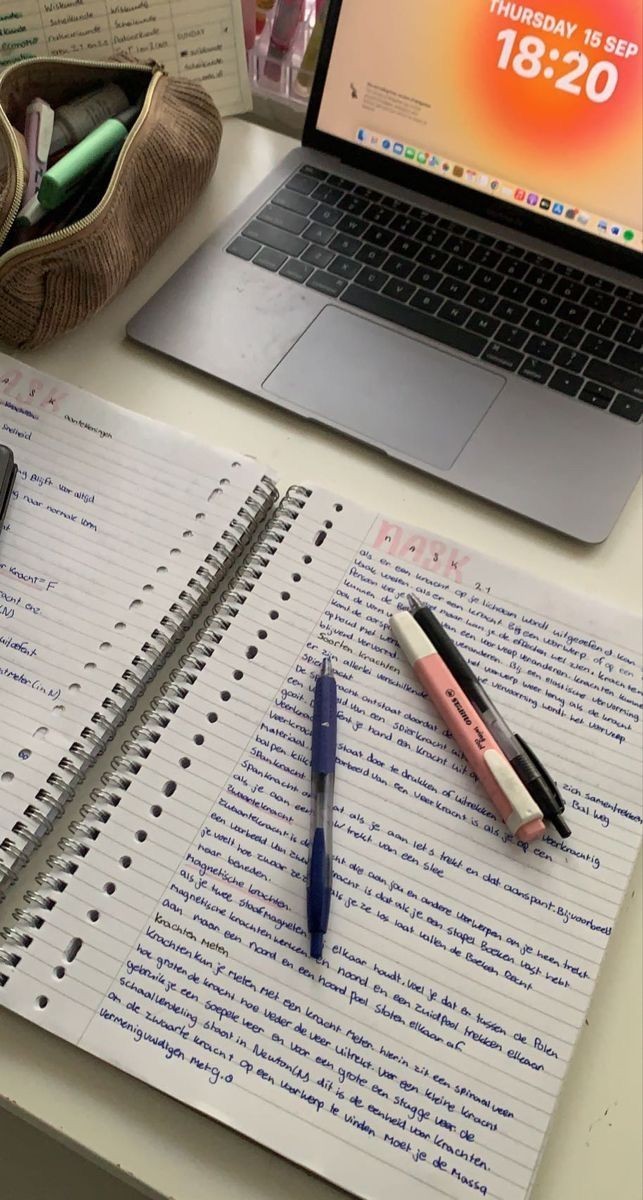
❥﹒♡﹒☕﹒ 𝘁𝗶𝗺𝗲-𝗺𝗮𝗻𝗮𝗴𝗲𝗺𝗲𝗻𝘁 𝘀𝘁𝗿𝗮𝘁𝗲𝗴𝗶𝗲𝘀 𝘆𝗼𝘂 𝗺𝗮𝘆 𝘄𝗮𝗻𝘁 𝘁𝗼 𝗸𝗻𝗼𝘄
𝟭. set SMART goals ( 📒 )
make sure your goals are specific, measurable, actionable, realistic and time-bound. this will help you maintain focus and track your progress over time. how many times has it been you and your unrealistic to-do list against the world? well, it seems that a mile-long to-do list is not a good ally at all. remember that you are a person and not a machine, and that just dedicating four hours to deep work and concentration is A LOT. be kind to yourself and don't overload yourself with more work than you can humanly do.
𝟮. daily planning ( 🧸 )
mea culpa because i'm the first one who doesn't plan their day. to-do lists generally stress me out and make me feel overwhelmed as if i don't manage to complete all the tasks an asteroid will end up hitting the earth. but i recognize that it is a good starting point. sometimes i have too many things to do and i end up doing nothing in total confusion, but having at least a general list to follow gives me more motivation. moreover do we want to talk about the dopamine released when you tick an empty box? marvelous. maybe don't write down tasks that are too onerous and demanding, break them into several smaller tasks, also try to write simple activities such as "drink a glass of water" every now and then. having these low-commitment activities will help you stay motivated while completing more important tasks.
𝟯. reverse-engineering method ( 🪴 )
start with the end goal and work backwards to plan the actions needed to achieve it. this helps you maintain clarity on the steps to take and focus on the most relevant actions. the best thing to do is plan based on the time available and do your best to stick to your daily goal.
𝟰. timer roulette ( ⏳ )
choose a task from your to-do list and set a random timer between 15 and 45 minutes. work on that task with all your concentration until the timer goes off. this helps you fight procastination and keep your mind fresh.
𝟱. mind mapping time ( 📍 )
before starting a study session, take a few minutes to create a mental map of the subject you need to cover. this helps you see connections between concepts and organize information more effectively.
𝟲. task batching ( 🫒 )
group similar tasks together and tackle them in batches. for example, reply to all emails in one session rather than doing so at scattered times throughout the day. this helps you reduce transition time between tasks and maintain focus. contrary to popular belief, human beings are not truly multitasking (only a few possess this great ability) and when we do multiple things together we do nothing but shift our attention from one task to another, greatly reducing the quality of our performance. if possible, try to avoid these switches that are harmful to your focus and concentration.
𝟳. the pomodoro method ( 🍅 )
okay, y'all probably already know this one because it became so popular in the last year but if you don't, the pomodoro method is a time management technique developed by francesco cirillo in the late 80s. it is based on the idea of working for short periods of time, usually 25 minutes, followed by a short 5 minute break. after four rounds of work, a longer break is taken, usually 15-30 minutes. this technique helps improve concentration and productivity, as it breaks down work into manageable tasks and offers regular breaks to rest and regenerate energy. i personally prefer the 50/10 ratio while i'm studying but you decide which time ratio is better for you, i find it really useful and it helps me a lot while i'm studying for my exams.
#college#education#school#academia#note taking#student#study aesthetic#study blog#study inspiration#study motivation#study notes#study space#study tips#student life#study community#studyblr#studyinspo#studyspo#uni student#academic validation#chaotic academia#light academia#dark academia#university life#university#uni life#time management#time management strategies#pomodoro method#productivity
353 notes
·
View notes
Text
Now seems like a good time to introduce a strategy to all my ADHD peers that I've invented so I wouldn't be Late to everything!
It's called...
✨️ Disaster Time ✨️
You know that feeling when you wait til the last second to do something and THEN it seems like THAT'S when everything goes wrong??? Right when you need everything to go smoothly?
You're thinking "the office is only 10 minutes away, so I'll leave 10 minutes before my appointment time!" And THAT'S when it happens; You forget to brush your hair, you can't find your keys, your wallet is missing, your GPS is glitchy, there's traffic, there's a detour, you hit every red light, there's no parking, you enter the wrong door, you can't find the room, etc. There's always SOMETHING.
I used to get SO MAD when everything would go wrong while I was on a time crunch. It seemed like when I least expected it, suddenly every object that could possibly get in my way would get in my way. I used to think, "The universe is out to get me 😔 No matter what I do, everything is gonna go wrong."
And that's when a switch went off in my mind...
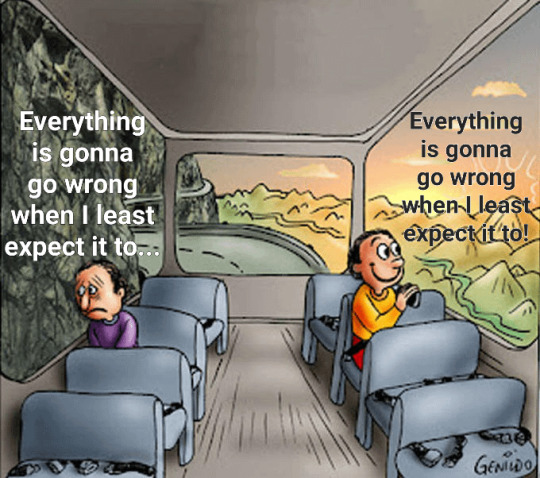
Everything is gonna go wrong when I least expect it to!!!
Therefore -> I should stop being surprised and just. Expect it to!!
Every time!
Hence, the invention of ✨️Disaster Time✨️
Disaster Time (noun) the extra time you alot for disasters.
If you just KNOW something's gonna go wrong and then just PLAN for something to go wrong! Then you'll always be ready for it!
Because something is always is gonna happen, right? Something is always gonna go wrong. You don't know what's gonna go wrong, so instead of hoping nothing goes wrong and then being disappointed when something does go wrong, just alot some Disaster Time!
So you think to yourself "the office is only 10 minutes away, so if I give myself 10 extra minutes of Disaster Time for when The Disaster happens, then I'll leave 20 minutes before my appointment time."
Your assignment's due at midnight? Disaster Time! Make it due at 11:40 to account for when the [internet goes out / file gets corrupt / website doesn't load / grammar errors pop up ]
Your hangout is at 8pm? Disaster Time! Give yourself 10 extra minutes to [find your missing phone / stop and grab some gas / brush your hair / quickly eat a snack]
Work at 9? Disaster time! Leave 15 minutes earlier for when [you spill coffee on your shirt / your car light goes off / you forgot something and have to go back]
People used to tell me to do things "early" but I have adhd and time blindness! "Early" doesn't exist!!! "Early" is an abstract concept! And "early" isn't as motivating as "The Last Second"
So instead, alot a set amount of Disaster Time and adjust your "last second" to account for that pesky inevitable Disaster, and you'll always be on time!
If you EXPECT that everything will go wrong EVERY time and just *account* for that when you plan, then you'll always be on time!
#No joke inventing this strategy saved my butt so many times#i used to be the person who was late to EVERY social function#all because of the ''it takes 10 minutes to drive there so ill leave 10 minutes before it starts!'' mindset#Allotting Disaster Time has revolutionized my ETA to everywhere I need to go and my due dates for everything i need to do#anya rambles#adhd advice#adhd adult#adhd in women#adhd inattentive#adhd tips#time blindness#adhd problems#adhd things#actually adhd#adhd brain#adhd help#adhd issues#unsolicited advice#advice#adulting
168 notes
·
View notes
Text
Problem: laundry is boring
Solution: bury phone in pile of to-be-folded clothes so that you cannot pick it up and must instead fold your clothes to access it
Subsequent Problem: Spotify Ad comes on and makes this unbearable
How This Is Actually A Good Thing: makes you more motivated to hurry up folding so you get to your phone and mute the ad
#laundry#executive dysfunction#life tips#productivity#motivation#spotify ads#also this only works if you promise yourself you won’t just dig through the pile and get your phone that way#you have to comply with the strategy
28 notes
·
View notes
Text
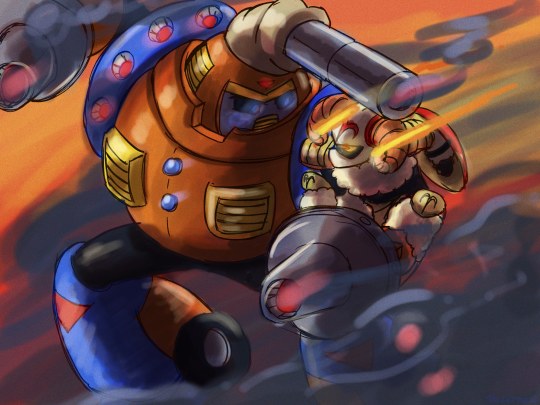
Mars and Aries.
Made Aries closer to average sized because I like contrast.
#mega man#mega man classic#stardroids#cosmodroids#constellationdroids#mega man v#rockman strategy#doodles#krita#rockman#stardroid mars#cosmodroid aries#the depression is hitting hard again#and yeah. the tips of his horns are on fire if it wasn't obvious. i just thought it'd look cool.
107 notes
·
View notes
Text
Strategy for the battles
So ya'll, while I'm glad the battles were only two in-between each story node, obviously they had to make them harder and I noticed you used way more action points than usual.
My team has been so beefed up there was literally no stage which I was struggling, but I did have a question for everyone....
did any of you ever deal damage higher than 100 per hit for those shield wielding fluffy dog angels?
I call them fluffy doggos because that's what they look like lmao but yeah basically two beefed up Petit El's with shields and while they didn't do anything they were still annoying to take down. Even with ults they only took 100 in damage.
The fastest I could do was bombarding them with everyone once the other enemies were taken down, and use Bath Satan's ult that has the poison feature to help bring their defense down. Other than that I was sitting forever waiting for my team to take them down. I'm sure they will show up in the next chapter so I'm just trying to see if anyone had any other methods of quickly getting rid of them instead of just dealing with sitting there while they take forever to die lol
43 notes
·
View notes
Text
Conducting a War
So, your story takes place during a war. Maybe your characters are experiencing war or maybe they're waging war against other characters or groups. Likely, you are not a general or expert in warfare. How do you write a story that is set during a war?
Who's fighting who?
The first, most obvious, step is to know who is fighting whom and why. Wars are between groups of people. They can be a small clan, a massive nation, or even an entire planet or galaxy. Two characters fighting it out are not considered "at war" because they are representing themselves and settling an individual dispute, even if it is a high-stakes dispute.
Why are the parties in your story fighting? There are a lot of different reasons why two groups of people would go to war against each other, but most wars are over resources at their center. Disputes over land and borders, over who gets what crops and for what price, and even religious wars are usually about the resources available and scarcity. So when you're talking about war, you need to know what either side wants. Just like a character, your war parties need to have desires and stakes.
"Resources" can mean just about anything that society needs. Food, fresh water, opportunities for trade, minerals, metals, building materials, and wealth are all examples of resources your war parties can fight over.
What does it take to wage war?
Wars require resources too. It's not just about getting resources but spending resources as well. When nations go to war in the real world, there are opportunities for people to make exorbitant amounts of money and wealth by taking advantage of a wartime economy.
The parties waging war need people to fight their battles. They need to pay those people, arm them, feed and clothe them, and transport them to where they need to be. Where does the government or person in charge get the food, armor, weapons, and transportation? Where do they allocate those scarce resources? Oftentimes in war, those in charge must make sacrifices. Is there a portion of land that the person in charge gives up to protect another portion with their limited resources?
There are unlimited stories hidden in these questions, and a large base of world-building will help to answer these questions in depth. There are many opportunities for tension and rising stakes for your war parties in the event that the opposing side makes acquiring war resources difficult or impossible.
Types of Armies
Your armies tell you a lot about the resources available to your characters and how you can build your story and plot line around the war. So I'll discuss the differences between four types of armies that exist in the real world and throughout history. These are examples; you can change or twist these examples however best suits your story.
The first is a professional army. These guys are paid and trained by the state; being in the army is their entire job. The army can fill a number of different roles other than fighting, but their purpose is to provide martial protection to the people of their nation and carry out martial orders from the government or sovereign entity in charge. Important aspects of a professional army to consider: these soldiers are paid for their work, they are trained by professionals, and oftentimes they follow a hierarchy or chain of command. Most governments provide medical care to their professional armies, but this isn't required. The soldiers can be conscripted or voluntary.
Next up is a mercenary army. This army is also paid for their services, but they are not trained by the state, and they ultimately take their orders from the organization, not the government. The government commissions the mercenary army for their services. The government does not provide most of the resources required to maintain an army. They pay for the army but don't necessarily feed, arm, or clothe them.
A fyrd is a historical term that refers specifically to the Anglo-Saxon armies raised by different Lords and Thegns to protect their lands and shires. These armies consisted of civilians and able-bodied free men from the local settlements and farms gathered by the ealdorman. They were conscripted into the service, and they lacked formal martial training. Also, importantly, their provisions and weapons were provided by the soldiers themselves. Meaning you will see fewer long swords and forged weapons for the purposes of fighting and more axes and improvised weaponry. The purposes of the improvised weaponry are primarily as other tools, such as axes for chopping wood and knives for butchery. Any horses or mules brought along for work or fighting are the property of the lords or farm owners who provided them.
A militia is very similar to a fyrd; this army consists of civilians who are paid or conscripted into service by the government but are not professional soldiers. These militias may sometimes have training from professional soldiers among their ranks, but mostly they are civilians training themselves. The soldiers provide their provisions, weaponry, and armor, meaning that the wealth has to come from the soldiers and their professional jobs and not from their martial services. The militia is a more modern term, but it is marginally different in that most militias we think of today are voluntary and not conscripted.
Battle Strategy
This is where a little research may help you. Battles behave differently depending on different factors. What technology and weaponry is available to your war parties? Are we talking about bladed weapons or guns or lasers? Is your army a professional or mercenary army, or is it more like a fyrd or militia?
When setting up a battle in your story, focus on the differences between the two armies and how that may affect their strategy toward fighting or engaging the enemy. If your fyrd faces a professional army, they may encounter some problems regarding weaponry and armor. Your fyrd will struggle to match a professional army in defending against well-made weapons and professional training. How do they work to compensate for those weaknesses?
When looking at two equally armed and trained armies, a general or battle strategist will look to the terrain to plan a battle. Generally, controlling the high ground helps in battles. If one army has a heavy cavalry presence, your opposing army may want anti-cavalry measures in place. Do they have the space to do so? Urban areas will lend themselves well to guerilla-style and urban warfare tactics. Jungles and forests will look different to hills and plains, and deserts bring unique problems to a battle that a mountainous terrain might not.
What is the battle for? Battles have a purpose; otherwise, there would be no value to the loss of troops. What is worth the risk of losing lives? Does the battle have stakes? Some stakes that might be worth conducting a battle over include taking control of a river pass, allowing naval trade and travel, cutting off control of a trade route to the enemy, or invading an important town or city to process and refine necessary materials.
Ending the War
The war will eventually end if your characters are lucky. But what ends a war? Wars usually end with agreements between the two opposing parties following surrender or extension of peaceful negotiations. Negotiating what each party needs or wants is an art in and of itself. Each party must come to the agreement that waging war further is more expensive and less rewarding than ending violent opposition with concessions made by either side.
Conclusion
Wars and battles are like characters; they have needs, desires, and stakes. Writing your characters in a war or battle will hinge on the needs and stakes of the greater war and story. Important questions to ask are: what are we fighting for? Who are we fighting? And what happens if we don't fight?
–Indy
#writing advice#writing tips#writing resources#writeblr#amwriting#writblr#writers of tumblr#writers on tumblr#writing help#writing guide#on writing#creative writing#writing#writers#writing about war#writing war#writing warfare#writing battle strategy#writing battle planning
977 notes
·
View notes
Text
I just saw a post titled:
How many drafts should you go through before deciding your novel is ready?
And it basically said: 'There's no official number, but to create a foundation that ensures you don't burn out quickly, overwork yourself, and get tired of your work, I'll say four. That's the number I use for my students as they have other engagements outside writing that take up a lot of time.'
😅 Right... firstly, I hold no malice to this post. Secondly, I recognise they said there is no official amount. Thirdly, their comment section said replies were deleted and restricted, so I didn't comment, repost or tag them since I'm assuming they don't want direct discussion.
Finally... I want to hold the writing community's hand when I say this cause some of you need to hear it:
Your book is done when you decide it is done.
You could do 2 drafts or 100 and you'd still find things to change. Burnout is NOT measured by the amount of drafts you do, and you can get tired of YOUR story before you finish draft number one if your heart isn't in it.
Burnout wise... Guys, from an (ex) psychologist and wellbeing consultant here. Literally someone could look at you funny tomorrow and you burn out. It's an accumulation of stress and pressure that causes physical, mental and emotional exhaustion. 1 draft on top of other stressers could burn you out. The number of drafts doesn't directly correlate to burn out.
You are building a world, creating from YOUR mind. Build your process to suit YOU.
One agent may support your book as it is, another won't. One reader may love it as is, another won't—it doesn't matter. What matters is your experience with YOUR story and YOUR process. Literally, your beta readers and/or editor will still find typos after you've scanned it 50 times—your brain will blank them out. It's natural.
You're trying to squeeze your personal process into a one size fits all. Lovely, no one else is YOU or can create exactly like YOU.
Okay, so I'm here ranting, but what about me, right? How do I know this? Why should you even consider what I'm saying?
Me & my process:
I wrote my first book. It's a dark fantasy epic with 170k words for the 1st draft.
~ Finished writing it 2 months—I wasn't rushing, I'm just in love with my story (seriously, I'm smiling just thinking about it).
~ Got my beta reader feedback and polished it.
~ Submitted my 2nd draft to agents.
I didn't limit myself to 'my first draft should be unreadable or bad'—I wrote the way that felt right to me. I didn't focus on the amount of drafts I should have. Believe me, I tried at the very start to plan it all out based on what other people were doing, but it stressed me out.
Being a psychologist, conducting research and consulting 100s has taught me many things. One is: individual differences. We can't plaster our research results on everyone because everyone has differences in processing, feeling, learning, creating.
Anyway, in the end, I loved every single step of the process without following someone else's plan. Let me say that again:
I loved every... single... step of writing & refining my book. I'm in love with writing.
I have the next 4 outlined already as proof, even took a break from this story to outline a new 4 book series. Why? Because I wasn't concerned about if I was doing it right by someone else's standards. I'm having fun! And you can too!!
We need to stop limiting ourselves and our process based on outside guidance and external validation. And we wonder why we get stuck or creative block?!
So basically in one line:
Follow what feels right to you, YOU have the POWER.
And one more shake for good measure:
Stop making yourself suffer like your characters. You're creating a new world, leave the rules of this one behind 😊
End of rant, lovelies. Run free and create 🧡✨️ Have faith in yourselves
#writing a book#amwriting#author#writers on tumblr#writer#writing#writer problems#on writing#writers#writeblr#writing problems#writerscommunity#writing is hard#writing motivation#writer issues#writer inspiration#writer motivation#advice#creative process#writing process#writer chaos#writer community#writer life#writing advice#writing tips#writer tips#writing struggles#writing style#writers and poets#writing strategies
27 notes
·
View notes
Text
The High-Value Woman’s Mindset: Dignity First, Always
Attraction Principle #9:
If the choice is between her dignity and having a relationship, the bitch will prioritize her dignity above all else.
Like I mentioned two posts earlier, I’m creating a life so full that a man has to earn a place in it.
📌 If you missed it, read it here: 🔗 The Unattractive Energy I Didn’t See
And that’s exactly the mindset you need.
Men respect women who respect themselves. When you let your dignity take a backseat to a relationship, you’re telling him that your worth depends on his presence. And trust me—that’s never attractive.
That’s why you put yourself first. Your goals, your glow-up, your money, your peace. When you make yourself the priority, men naturally work harder to fit into your life.
Who is Shera Seven & Why You Need to Know Her
If you’ve been following me for a while, you’ve probably seen me mention Shera Seven multiple times. And if you don’t know who she is, let me introduce you to her lore—because if you want to level up your mindset about men, money, and relationships, she’s a must-watch.
Shera Seven is a feminine strategy coach who teaches women how to navigate relationships from a position of power. She emphasizes that men naturally chase what they can’t fully have, and the moment you make yourself too available, too accommodating, or too eager, you lose your leverage.
Shera Seven’s Core Teachings:
✨ Men are providers. If he’s not providing, he’s not worth your time. ✨ Be the prize. You don’t chase men—they chase you. ✨ Always have options. Never invest in a man more than he invests in you. ✨ Stay mysterious. Never let a man feel like he has you 100%. ✨ Live your best life. A man should be an addition, not the goal.
📌 Watch her here: 🔗 Shera Seven YouTube Channel
The Bottom Line:
Dignity first, always. A man should never feel like he has you on lock. Your attention, time, and presence should be earned—not given freely.
💬 What do you think? Have you ever put a relationship before your dignity? How did it turn out? Let’s talk.
✨ Reblog & share your thoughts! ✨
#🔹#dating advice#self worth#relationship tips#feminine energy#why men love bitches#high value woman#level up mindset#dating rules#self respect#relationship dynamics#shera seven#hypergamy#dating like a queen#be the prize#feminine strategy#men provide#soft life movement#feminine mindset
23 notes
·
View notes
Text
Reasons Why 80% of Romantic Plots Fall Through.
Haven't you wondered why a romantic story you have so much hope for suddenly flops? Whether it's yours or not, let's see what could be the problem.
• Relying Too Much on the Outcome
Unfortunately, no romance is complete without an arc. In other words, it is more than just the intimacy. When writers don't allow the relationship to develop naturally, it feels forced. Rushing to the final romance without building a solid foundation will make the story feel shallow and unconvincing. Take your time, flesh out the idea, and follow the plot gradually.
• Creating Unnecessary Victimization
I often see writers make the mistake of portraying one character as too weak or pitiful only for the sake of it. This unnecessary victimization can undermine the character's depth and make the story less compelling. Your readers won't cry along with a female character whose decisions are pretty sour compared to a five-year-old. It's just simply annoying.
Instead, both characters should have strengths and weaknesses, make realistic decisions, making them more relatable and balanced.
• Cringy Conflict.
Realistic conflict is essential for a compelling romance. Over-the-top or contrived conflicts can make the story feel forced and cringy. Conflict should come naturally and blend perfectly into the plot. It's not advisable to pop a challenge that's definitely not necessary in the name of 'keeping the stakes high.'
Rather, focus on creating believable challenges that the characters must overcome, adding depth and authenticity to the plot.
• Neglecting Other Emotions Outside Romance.
It's not only about love, or roses, or dinner nights, or lucky dates with the billionaire. Show the other emotions fighting for dominance: the hurts, pains, joy, frustration, desperation, anger, sadness, jealousy, anxiety, or even moments when a character falls out of love with the other and can't understand their feelings.
Focusing solely on love can lead to a one-dimensional story. For a well-rounded narrative, explore these emotions to create a richer and more immersive experience for the readers.
• Underdeveloped Characters.
What's a story without a fully-fledged character, especially if they are the main character in a story?
You might have heard people talk about the importance of backstories and others saying too much of it tires them out, but here's the thing—balance. It's what people fail to incorporate. I'll try to cover this in any of my upcoming blog posts. Follow to keep up.
To better understand why we should cry for, laugh with, pity, admire, adore, scold, yell at, advocate for, and smile with your character, we need to know why they are what they are, who they are, and why they make the choices they make.
It's important to create characters with distinct personalities, backgrounds, and motivations. When readers care about the characters, they become more invested in the story and its outcome.
And that's my Christmas gift from me to you 🎁. Merry Christmas 🎄
#writing#writeblr#writers on tumblr#writers and poets#writer#writing community#writerscommunity#wattpad#a03 writer#ao3 writer#story writing#writing strategies#writing style#writing struggles#on writing#writing stuff#creative writing#writing tips#writing ideas#writing advice
2K notes
·
View notes
Text
ADHD task completing tip
okay so growing up i was usually told "do the hard thing first and then you get to do the fun thing." and generally that's reasonable.... if you've got decent executive function. but for those of us who don't, this is a thing i've been using to get through school/work/general human functioning. It's still using hard thing/fun thing, but it interweaves them WAY more
first step: find something that sparks some dopamine quickly. i usually use short-timer online chess or mobile games. if you pick scrolling social media or something that doesn't have a clear endpoint, make sure you have an easy way to set a timer. On apple phones, there's a timer setting that says "stop playing" instead of playing a sound. I love this because it'll take you to your lock screen so you can't accidentally dismiss the timer and keep going. Do NOT make this movement or taking care of bodily functions; eating/hydrating/going to the bathroom/moving around are things you can and should do when your body tells you. take care of ya self
second step: look at your task and break it up TINY. If you have to write a paper, don't break it up by paragraph. break it up into something like fifty words. Cleaning a room: ten items put away. Close reading: 1 page. Really you want something that if your executive functioning was playing nice you could do in 1-4 minutes. I recommend NOT saying "work for x minutes" however, since that's a really quick way to sit there watching the clock. You wanna tie progress to completion not time spent.
third step: estimate how many levels/games/etc of your dopamine source it takes to last 1-5 minutes. Ideally you will already have a sense of this. I'd advise not "testing it out right now" and procrastinating that way.
fourth step: get to work. every time you complete a tiny task, you can do one unit of the dopamine thing. If you get some momentum, you can stack rewards, so if your tiny task was 50 words for one mobile game level, 150 words straight would be three levels. If you are having a really hard time getting going, you can start with 1-3 units of your dopamine thing to kinda jumpstart the process, just decide how many you're doing first so you don't lose hours to it.
note that this ONLY WORKS if you don't ignore your timer/level cutoff. The idea is to get dopamine levels up and use that to power through the next tiny task.
#tips and tricks#adhd#actually adhd#executive function#executive dysfunction#dopamine#motivation#adulting#school#work#find solutions that work with your brain#rather than struggle through solutions that don't#the only bad strategy is the one that makes the task harder#accommodations#self accommodation
139 notes
·
View notes
Text
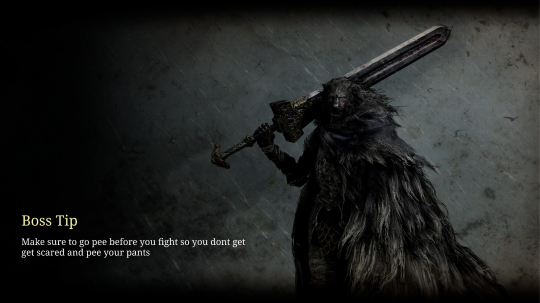
#elden ring#blaidd the half wolf#important#video game strategy#high level boss strat#tips to get good#become the best at video game using these hot tips#tip screen#from software
103 notes
·
View notes
Text
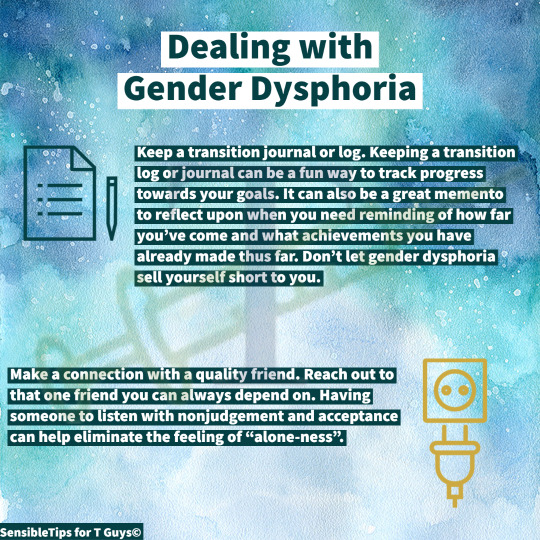
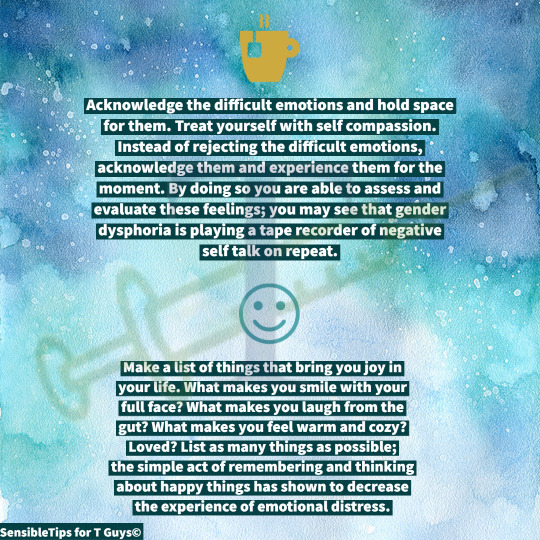
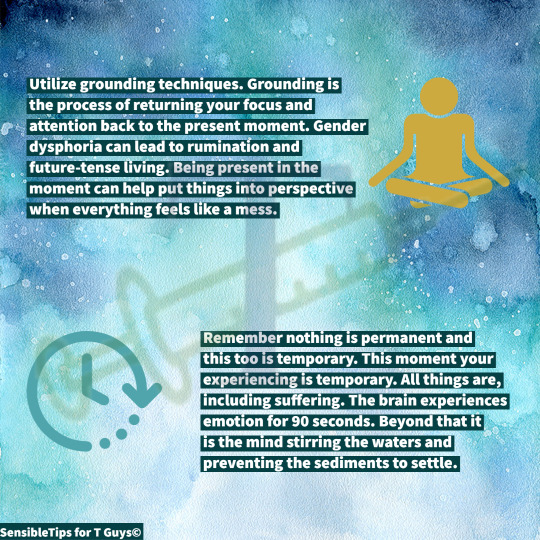
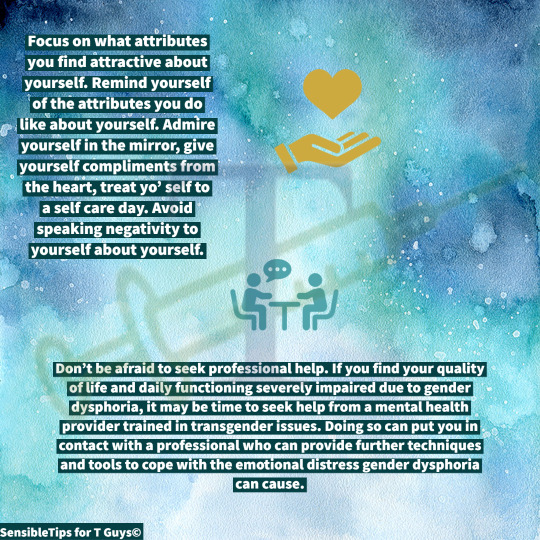
Mindful Monday
Tips for dealing with dysphoria when it reels its ugly head.
#FTM#F2M#transmasculine#transgender man#trans man#genderqueer#genderfluid#genderflux#demiboy#agender#bigender#non binary#pangender#FTM wellness#Mindful Monday#sensible-tips#healthy coping#coping skills#coping strategies#FTM health#FTM mental health
139 notes
·
View notes